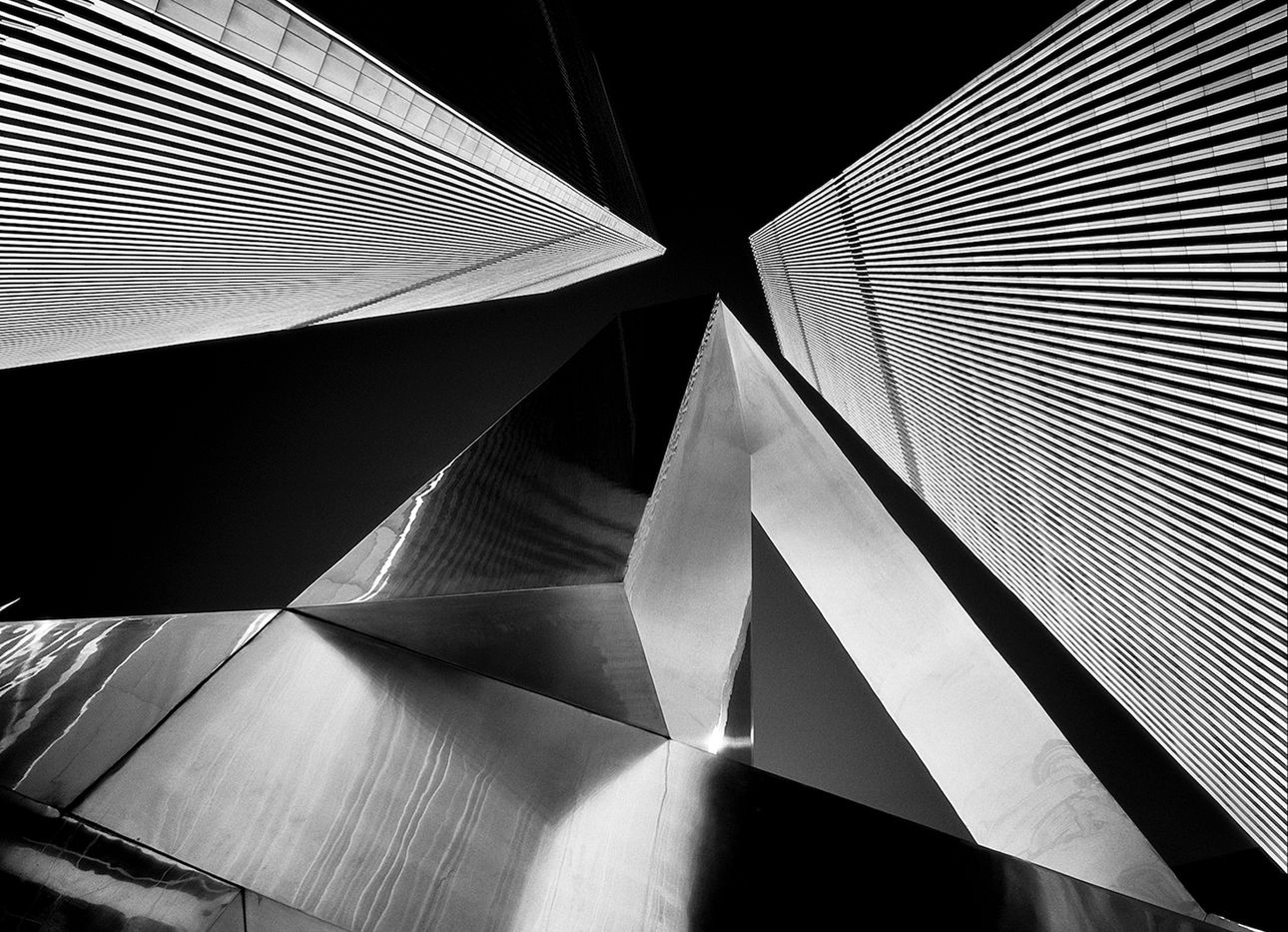
Simon Chaput’s Striking Photos of the Twin Towers Are a Love Letter to New York
In 1983, French photographer Simon Chaput arrived in New York City for a weeklong trip, and ended up staying for nearly 35 years. From the 1980s to the 2010s, he worked closely with the artists Christo and Jeanne-Claude, helping them realize various projects around the world, from “The Umbrellas” (1984–1991) in California and Japan to “The Floating Piers” (2014–2016) in Italy. Along the way, in 1984, Chaput met the artist and sculptor Isamu Noguchi, who recognized Chaput’s love of photography—Chaput had been passionate about the medium since childhood, but had long stopped taking pictures—and encouraged him to get back into it. Chaput later channeled his admiration for the city and its chaotic energy into a long-term series of photographs entitled “New York,” which he began in 1996, that chronicled the developing built environment of Lower Manhattan.
Among the collection of striking black-and-white pictures are those of the twin towers. The geometric compositions exemplify Chaput’s inventive use of negative space and flair for unusual angling, and despite any familiarity with what’s being depicted, can prompt viewers to look twice. On the occasion of the 20th anniversary of 9/11, we spoke with Chaput, who’s now based in Miami, about his fascination with the iconic skyscrapers and how his emotions around his images of them have evolved over time.
What initially drew you to the twin towers?
I moved to New York from a rural village in France, and had never seen such tall buildings. Every time I walked out of my apartment or down a street, or flew back to New York from a trip, I’d see the towers, and know that I was home. They became emblematic of New York for me, and represented the energy, the diverse people, the excitement, and all of the possibilities of the city. Like totems, in a way.
The buildings were already completed when I arrived, but nothing around them was. I’d go back to look at them regularly, and to see how the light was hitting the structures. I just thought their architecture was extraordinary. I was attracted to their appearance, as well as the way they interacted with the whole downtown scene.
How did you go about photographing them?
Capturing these images was a love letter to the buildings and the city for me. It was very important that I only photographed them on very sunny days with blue skies, because I didn’t want anything to look like a landscape. When the sky has no clouds, I can play with the image using filters, and turn [certain areas] black, dark gray, or whatever color I need. There’s not a cloud in the sky in any of these images, or in any of my work, actually, so everything just looks like sculptures.
Looking at the pictures after the attacks, how did your view of them change?
They definitely became closer to my heart than they were before. As an artist, I’m grateful that I was able to have time to shoot the towers in a unique way before they were destroyed. On a personal level, they make me appreciate being alive, because 9/11 was a sad day of loss and devastation for so many people.
I was in France when it happened. When I was finally able to fly back to New York, I looked for the towers from the window of the plane. That was a hard moment. Their absence made the horrific tragedy feel real, and made me question what was next for New York, and for humanity.
Several years passed before you were ready to revisit these images. When you finally displayed them, how did people respond?
Some people were immediately happy to admire the beauty of the towers, and to see the photographs as a way to honor those we lost that day. For others, it was too soon to be reminded of the emotional aspects of 9/11, as the towers had come to represent tragedy. We all heal in different ways, and at different paces.
I think it gets easier, with each passing year, for [more people] to have a positive response to my photographs, and to feel less sadness, and more reverence, for the buildings. I hope they convey the inherent strength and beauty of the towers, of New Yorkers, and of the spirit of the city.